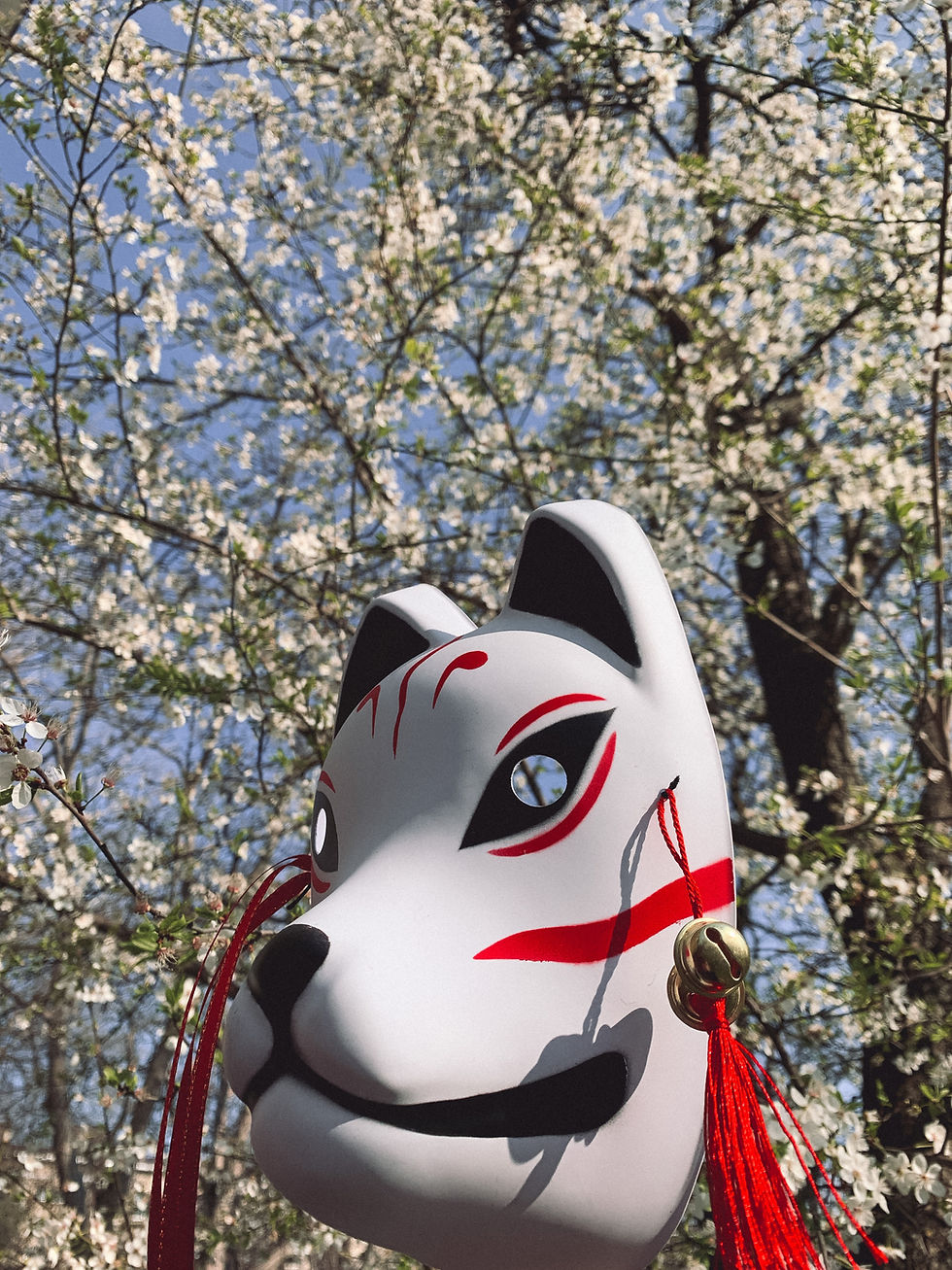Cernunnos: The Ancient Celtic Horned God Beckoning Pagans Today
- Wendy H.
- Sep 29, 2023
- 4 min read

Prominently displayed on pagan altars today is the powerful image of Cernunnos, the mystical horned god from Celtic mythology. While details about Cernunnos are scarce due to the limited surviving artifacts and texts, this ancient horned deity continues to captivate modern pagans seeking a connection to untamed masculine energy and the forgotten mysteries of nature's cycles.
Depictions dating back to the Iron Age showcase Cernunnos as a man enveloped by stags' antlers, often sitting cross-legged and accompanied by ram-horned serpents and other woodland animals. His name literally means “horned one” in Celtic languages. Ancient folk across what is now France, Britain, Germany, and elsewhere worshipped Cernunnos as a god of fertility, wildlife, riches, and the underworld.
Today, Neopagans revere Cernunnos as the Horned God of the witch’s sabbat rituals. He represents the untamed divine masculine, sexual virility, the wild stag-king of the forest, and the lord of death and rebirth. Cernunnos signals the shadow animalistic instincts that remain essential for survival. Yet he also embodies living in harmonic balance with the natural world.
For contemporary pagans and witches, Cernunnos symbolizes the life-giving and life-taking cycles of Nature. He persists as a mystical bridge between ancient pantheons and modern magical traditions, still seeking the lost connection to untamed landscapes and the primal self. Beneath Cernunnos’ horns lies deep wisdom waiting to be rediscovered.
How do you know if Cernunnos is the right deity for you?
Here are some signs that Cernunnos may be the right pagan deity for you to connect with:
• You feel a strong draw to wild, wooded spaces and nature. Cernunnos rules over the forest and untamed wilderness.
• You are looking for a deity to represent the masculine divine. As the Horned God, Cernunnos offers masculine energy and vitality.
• You want to honor the life, death, rebirth cycle seen in the seasons. Cernunnos governs these transitions.
• Fertility, virility, and sexuality are important to you. Cernunnos symbolizes the animalistic, lustful aspects of being human.
• You feel connected to deer, stags, rams, and antlers. These are Cernunnos' key motifs.
• You practice forms of witchcraft that incorporate a Horned God. Cernunnos is revered in many sabbat rituals.
• You are seeking an ancient Celtic deity not as widely known. Cernunnos provides some mystery.
• Living in balance with nature and your primal self calls to you. Cernunnos links the civilized and wild.
• You wish to deepen your understanding of earth-based spirituality. Cernunnos has ancient roots.
• You are looking for a god to invoke for strength, healing, and guidance. Cernunnos offers these.
Listen to your inner voice and meditate on images of Cernunnos. His energy will resonate powerfully if he is the right match for your path. Follow your intuition to discern if he is inviting you to walk at his side.
Ways to honor Cernunnos
Here are some suggestions for honoring Cernunnos, the Celtic Horned God:
• Spend time in the woods or other wild places important to Cernunnos. Connect with nature and wildlife.
• Incorporate antlers, horns, or ram's heads into your altar to represent Cernunnos. Use wood carvings if real horns are not available.
• Light green or brown candles to represent the forests and earth Cernunnos rules over. Burn pine or musk incense.
• Meditate holding stones or crystals associated with nature like malachite, moss agate, or jade. Visualize communing with Cernunnos.
• Make offerings of seeds, acorns, grains, flowers, leaves or berries found in the natural world around you. Give thanks for his blessings.
• Chant or sing hymns of praise to Cernunnos while hiking or sitting among the trees.
• Perform rituals requesting guidance from Cernunnos on topics like fertility, sexuality, or connecting to instincts.
• Thank Cernunnos for a successful hunt if you hunt game respectfully as he rules the forest beasts.
• Do magick spells aligned with Cernunnos' domains of abundance, protection, masculine energy, purification, and communion with nature.
• Include Cernunnos in seasonal celebrations, calling upon him at Beltane, the Fall Equinox, and Samhain.
Developing a relationship with Cernunnos requires spending contemplative time in his realms and listening for his quiet lessons that speak to your inner wild spirit.
Is Cernunnos related to the Greek god Pan?
Cernunnos and Pan are both ancient pagan horned god figures, so they share some similarities, but they originate from different cultures and myths:
- Cernunnos is a Celtic god prominently depicted in Celtic polytheism of the Iron Age around 1st century BCE to 1st century CE. Pan is a Greek god who rose to prominence later in classical antiquity from around the 6th century BCE.
- Cernunnos is always shown with horns or antlers like a stag. Pan is depicted with horns and goat-like features like hooves and a tail.
- Cernunnos is associated with nature, fertility, animals, wealth, and the underworld in Celtic tradition. Pan is the Greek god of nature, shepherds, music, revelry, and rustic divination.
- Images of Cernunnos emphasize his connection to the forest, sitting cross-legged, and accompanied by wildlife. Pan is often shown playing his pan flute pipes known as syrinx.
- Cernunnos does not seem to be expressly noted as a god of music, revelry or sexual freedom like the lustful satyr-like Pan. Cernunnos has a more mysterious, subterranean essence.
- In contemporary Paganism, Cernunnos endures as a horned god of the witches' sabbats, while Pan lends his name to the spiritual worship of nature (the Pagan "pan-theism").
So in summary, Cernunnos and Pan have some overlap as ancient horned gods of nature worshipped by early pagans, but they come from different mythic traditions. Their unique attributes and symbolism offers lessons for those invoking them today.



Comentários